

![]()
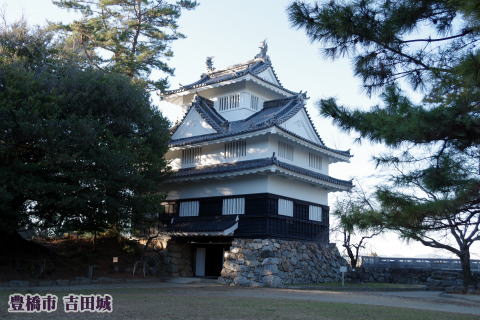

豊橋市豊橋公園・愛知大学周辺の戦争遺構
豊橋公園及び愛知大学周辺に「軍都豊橋」の歴史が今も残っている。これらの戦争遺跡を再認識し、日本の近代史「軍部・戦争の歴史」戦争悲惨さ・命の尊さを学び考え、二度と戦争を繰り返さないように伝え残そう。
愛知県豊橋市豊橋公園
豊橋市は明治のころから太平洋戦争終戦まで兵隊の町で、現在の吉田城址周辺の豊橋公園は「歩兵第十八連隊」の二千人余りの若い兵士たちが、連日激しい訓練を受けていた場所である。
現在の豊橋市役所、豊城中学校、豊橋公園内に当時の戦争遺構が点在している。
Toyohashi
Park, Toyohashi City, Aichi Prefecture
Toyohashi City was a soldier's town from the Meiji period until the end
of the Pacific War, and Toyohashi Park, around the current Yoshida Castle
ruins, was where over 2,000 young soldiers of the 18th Infantry Regiment
underwent intense training every day.
There
are war remains from that time scattered around the current Toyohashi City
Hall, Toyoshi Junior High School, and Toyohashi Park.
旧陸軍歩兵第十八連隊西門(市役所西側)
第十八連隊の営門として使用されていたが、営門が八町門(豊橋公園正門)に移ってからは閉鎖され西門と呼ばれていた。
Former Army Infantry 18th
Regiment West Gate (west side of City Hall)
It
was used as a gate for the 18th Infantry Regiment of the former Army, but after
the gate was moved to Hachimachi Gate (main gate of Toyohashi Park), it was
closed and called the West Gate.
Due
to National Route 1 construction in 1959, it was relocated and restored next to
the current Toyohashi City Hall parking lot.
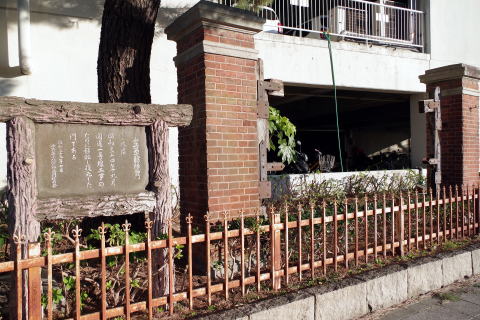

※旧陸軍歩兵第十八聯隊:
*Former Army Infantry 18th
Regiment:
A new barracks was established in Nagoya in June 1884 (Meiji 17), and barracks
were constructed on the ruins of Yoshida Castle, most of which was completed
in April 1885 (Meiji 18), and the relocation was completed by 1887.
The
current locations include Toyohashi Park, Toyoshi Junior High School, and
Toyohashi City Hall (Yoshida Castle Ruins). After the war, many of the
facilities were demolished, but Toyohashi City Hall was opened using the
remaining barracks.
灰捨て場(豊橋公園の豊城中学校近く)
兵舎での生活で出たごみの焼却灰を捨てるところと 思われます。今はコンクリートで塞がれているが、丸い穴から捨て、裏側から灰を掻きだし堀に落ちるようになっていた。
Ash dump site (near Toyojo
Junior High School in Toyohashi Park)
This seems to be the place where the
incinerated ash from the garbage generated during life in the barracks is
disposed of. It is now blocked off with concrete, but people used to dump it
through the round hole, scrape out the ash from the back, and let it fall into
the moat.
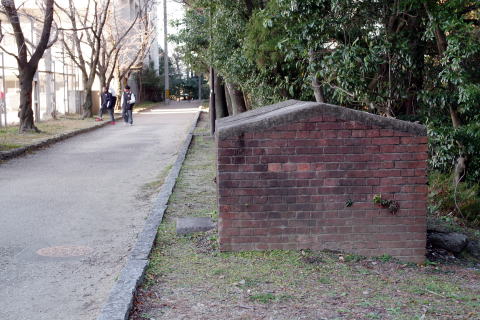

営門と哨舎(豊橋公園正門)
18聯隊の正門で、当初は木製の門柱と哨舎であった。1909年(明治42年)にレンガ製、1935年代(昭和10年代)になってコンクリート製に替わったようです。
哨舎:歩兵第十八連隊に出入りする人を24時間チェックしていた哨兵の小屋。
Gate and guard house (Toyohashi Park
main gate)
It
was the main gate of the 18th Regiment, and originally had wooden gateposts and
a sentry post. It seems that it was made of brick in 1909 (Meiji 42), and was
replaced with concrete in 1935 (Showa 10s).
Sentry:
A sentry's hut that was used to check people entering and exiting the 18th
Infantry Regiment 24 hours a day.
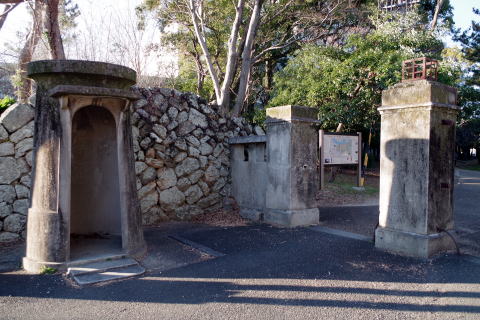

弾薬庫(豊橋公園正門の右手)
弾薬の保管庫。隣接して火薬庫があったが、土塁がみられるが現在は分からない。
Ammunition storage (right hand side
of Toyohashi Park main gate)
There
used to be a gunpowder storage facility next to it, but the earthworks can be
seen, but it is no longer known.
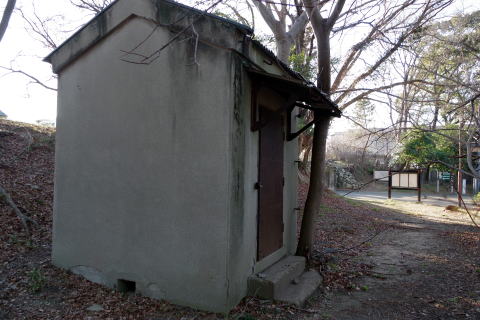
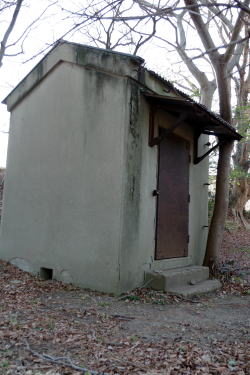
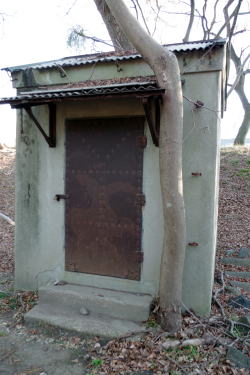
馬頭観世音(豊橋公園正門の右手、弾薬庫の上側)
軍馬の守護神として1941年(昭和16年)に建てられた。
Bato Kanzeon (on the right
side of the main gate of Toyohashi Park, above the ammunition storage)
It
was built in 1941 (Showa 16) as a guardian deity of military horses.
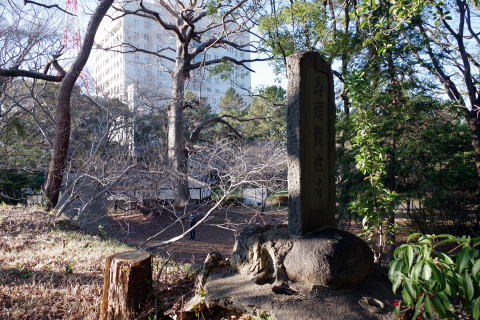

連隊記念碑の台座
1941年(昭和16年)に建てられた。この台座の上に「突破」と刻まれた砲弾型の碑があったが撤去されている。
Regimental monument pedestal
It
was built in 1941 (Showa 16). There was a cannonball-shaped monument on top of
this pedestal with the word ``Breakthrough'' engraved on it, but it has been
removed.
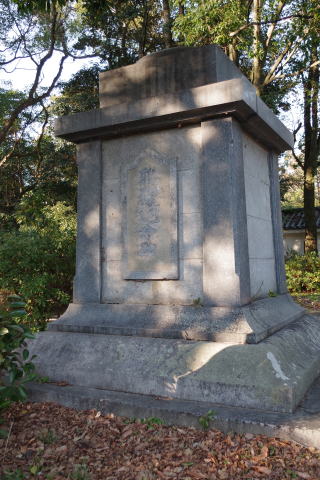
将校の通用門
将校が兵舎から将校クラブへ行くときに利用した通用門で、夜でも分かるように黄色の目印線が入っている。
Officer's gate
This
is the side gate that officers used to go from their barracks to the officers'
club, and it has a yellow marking line that makes it visible even at night.
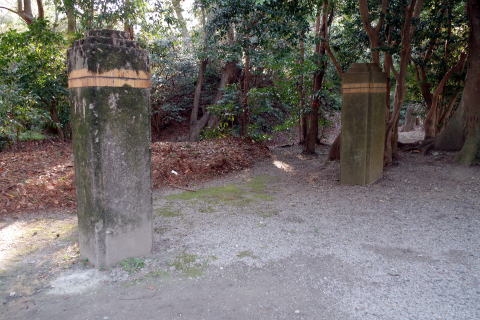
歩兵第二百二十九聯隊記念碑 229th Infantry Regiment Monument
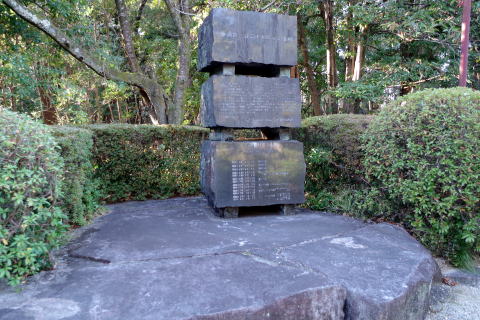
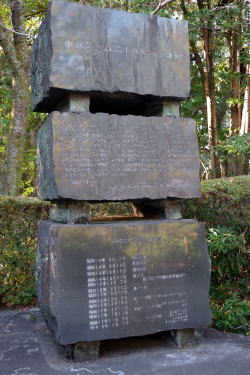
歩兵第十八聯隊之址碑 18th
Infantry Regiment Monument

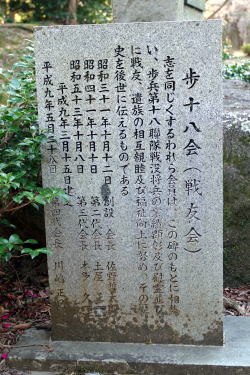

此所に歩兵第百十八聯隊ありき碑

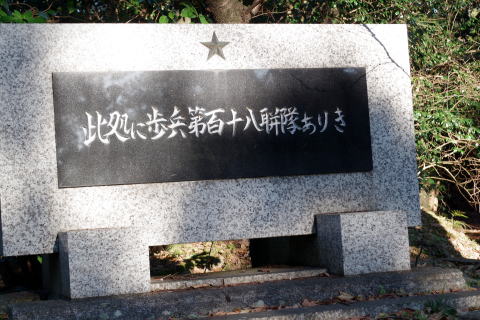
戦災復興碑 War
disaster reconstruction monument
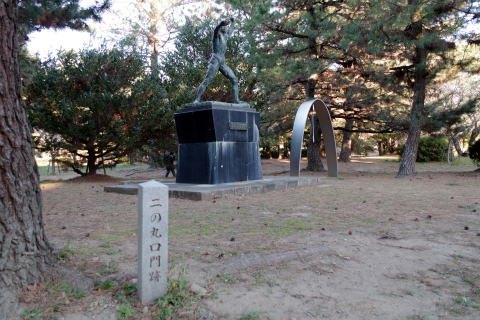
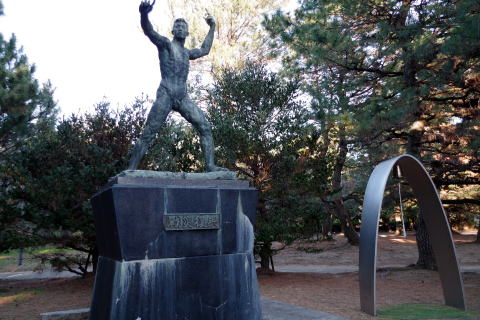
聯隊の営内神社(弥健神社)。その場所に現在、神武天皇銅像があります。この像は、もともと軍人記念碑の上に建てられていたもの。軍人記念碑は、歩兵第18聯隊の活躍と功績、戦没者の追悼のため、1891年(明治24年)8月以来、豊橋の政財界の人々により企画されが、なかなか建てるまでに至らず、日清戦争が終わった後の1899年3月(明治32年)八町錬兵場正面(現在の八町通4丁目)に竣工しました。その後、1916年(大正5年)には、練兵場の北側に移された。
A
shrine (Yatake Shrine) located within the regiment's camp. There is currently a
bronze statue of Emperor Jimmu in that place. This statue was originally
erected on top of the Soldiers' Monument.
The
Soldiers' Monument has been planned since August 1891 by people in Toyohashi's
political and business circles to commemorate the activities and achievements
of the 18th Infantry Regiment and the war dead, but it has not been built.
It
was completed in March 1899 (Meiji 32), after the war between Japan and Qing
Dynasty, in front of the Hachimachi Renpyojo (currently 4-chome Hachimachi
Dori).
Later,
in 1916 (Taisho 5), it was moved to the north side of the parade ground.
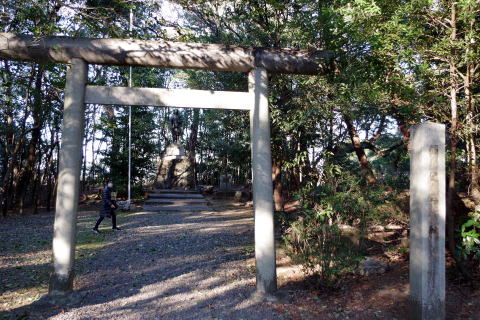
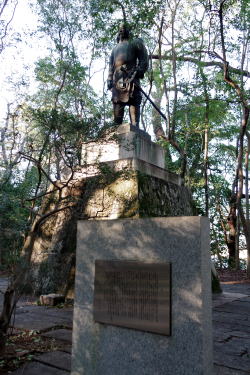

※吉田城
戦国時代、戦乱の最前線基地であった「吉田城」豊橋公園全体と隣接する市役所の敷地が旧吉田城址です。
1564年には松平時代の家康公が、今川方の吉田城代小原鎮実を攻め、吉田城を攻略し、城主に酒井忠次をおきました。
酒井忠次は吉田城を改築し、新たに堀を掘ったことが発掘調査で明らかになっています。
その後、羽柴秀吉配下にあった池田輝政(照政)が、吉田城の城主となり、大城郭を改造しています。輝政時代の遺構には鉄櫓下の石垣があり、当時としては最新技術で積まれた石垣といわれています。
世界遺産となっている姫路城を池田輝政が築く前は、実は吉田城の城主だったのです。

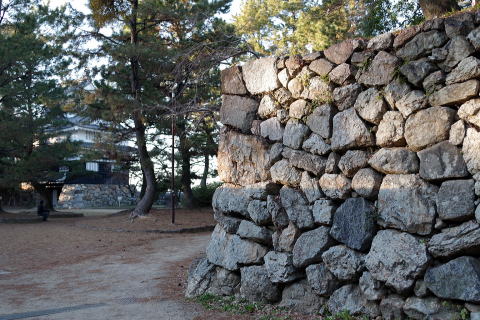
歩兵第十八聯隊(豊橋公園) | 豊橋市美術博物館 (toyohashi-bihaku.jp)
豊橋陸軍墓地
歩兵第18聯隊の兵営が造られたのと同時に、市街地や兵営を見下ろす東田の丘の上に
初めは陸軍埋葬地と呼ばれ、兵卒の平時死亡者のために設けられましたが、次第に将校も葬られるようになった。昭和13年(1938)から陸軍墓地と呼ばれるようになり、合葬塔が建立されてきた。
墓地には兵卒・下士官の墓52基、将校の墓31基、清国俘虜の墓1基、馬の塚3基、日露戦
Toyohashi Army
Cemetery
At
the same time as the barracks for the 18th Infantry Regiment were built, a
2,000-tsubo military cemetery was established on Higashida Hill overlooking the
city and the barracks.
Initially,
it was established for soldiers who died during peacetime, but gradually
officers also came to be buried there. Since 1938, it has been called the Army
Cemetery, and a funeral tower has been erected there.
The
cemetery includes 52 graves of privates and non-commissioned officers, 31
graves of officers, 1 grave of Qing prisoners of war, 3 horse mounds, and
Russo-Japanese War graves.
There
are five mass burial graves from the war, the ``Monument of the North
Manchurian Loyal Dead,'' and the ``Monument of the Loyal Dead of the China
Incident in 1925.''
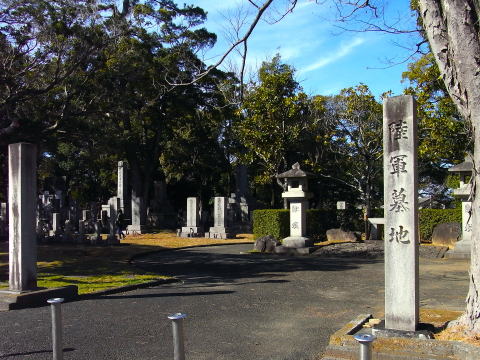
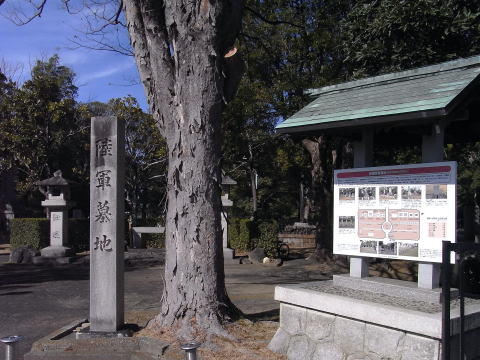
陸軍墓地(東田町)
以前は西南側に入口があったが、昭和57年(1982)に西半分を公園とするため、東半分に移転しました。大きな墓碑は西を向いていましたが、東に向きが変わっています
手前の左端は兵卒、右側は下士官、背後の大きな墓は将校の墓です。階級差が墓石の規格にも反映されました。
Army cemetery
The
leftmost grave in the foreground is that of a private, the right is that of a
non-commissioned officer, and the large grave in the background is that of an
officer. Class differences were also reflected in the standards of tombstones.
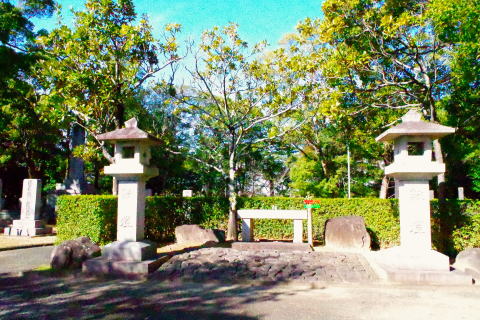
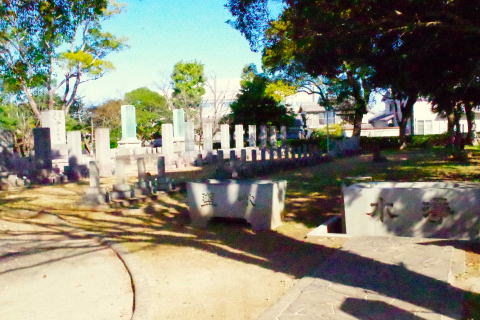
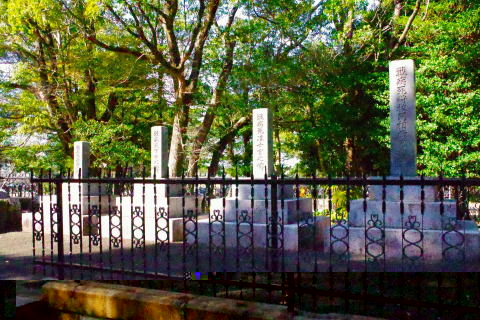

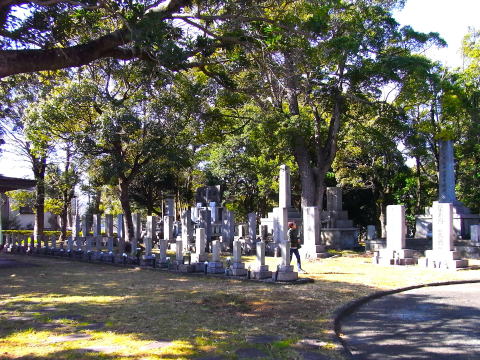

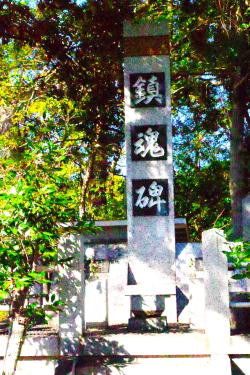
将校の馬の塚
Officer's Horse Mound
This
is the horse-riding mound of the regiment commander, adjutant, and 2nd
battalion commander who were dispatched to the war between Japan and Qing
Dynasty.
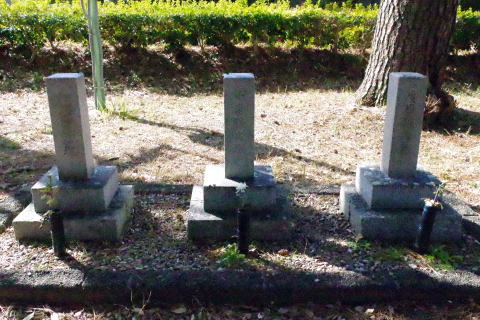
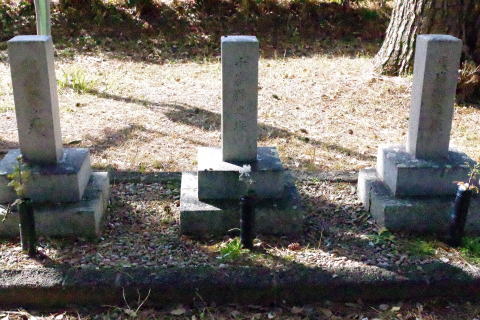
※陸軍墓地 | 豊橋市美術博物館
(toyohashi-bihaku.jp)
愛知大学周辺戦争遺跡
豊橋市の愛知大学、高師緑地の周辺には陸軍第15師団・予備士官学校などの多くの軍隊施設と広大な演習地があり、今もかつての「軍都・豊橋」の歴史の証人として、当時の戦争史跡が残っている。これらの戦争遺跡を再認識し、日本の近代史「太平洋戦争」戦争悲惨さ・命の尊さを学び考え、二度と戦争を繰り返さないように努めよう。
War ruins around Aichi University
In the vicinity of Aichi University and Takashi green space in Toyohashi City, there were many military facilities such as the 15th
Army Division and Reserve Officer School, as well as vast training grounds.
It is also a witness to the history of the former military capital of Toyohashi.
There are still remains of the war history from
that time.
Let's reacquaint ourselves with these war ruins,
learn and think about Japan's modern history of ``Military/Pacific War,'' the
tragedy of war, and the preciousness of life, and try to prevent war from ever
happening again.
旧陸軍第15師団
日露戦争後の明治40年(1907)、陸軍は戦争中大陸で編成された第15師団を帰還後豊
兵営は、約50万坪の敷地がありました。田原街道(現在の国道259号線、以下同じ)に面
1927年(昭和2年)に下士官候補生教育のため豊橋陸軍教導学校が、1939年(昭和14年)には甲種幹部候補生教育のために陸軍予備士官学校が開設された。
田原街道(国道259号線)沿いに、第十五師団司令部、憲兵隊本部、病院、監獄等の様々な施設がありました。これらの敷地の多くは、現在では、愛知大学、県立時習館高校、県立豊橋工業高校等の学校や公共施設として利用されている。
Old Army 15th Division
In
1907, after the Russo-Japanese War, the Army decided to station the 15th
Division, which had been formed on the continent during the war, in Toyohashi
upon its return.
The decision to attract Toyohashi seems to have come about because the
vast Takashihara/Tenpakuhara training range resembles the battlefields
used on the continent
Toyohashi
Army Training School was established in 1927 (Showa 2) to educate
non-commissioned officer candidates, and in 1939 (Showa 14), the Army Reserve
Academy was established to educate Class A officer candidates.
Along Tahara Kaido (National Route 259), there were various facilities
such as the 15th Division Headquarters, Military Police Headquarters, hospital,
and prison. Many of these sites are currently used as schools and public
facilities such as Aichi University, Prefectural Jishukan High School,
and Prefectural Toyohashi Technical High School
豊橋陸軍教導学校・豊橋陸軍予備士官学校
第1次世界大戦の後、軍縮の時代を迎えました。陸軍では、この機会に不要となった歩兵や
第15師団は大正14年(1925)4月19日、廃止になりましたが、師団司令部や歩兵第60聯隊などの兵舎を使用して、昭和2年(1927)8月1日、下士官候補者の教育を行うために豊橋陸軍教導学校が開校しました。また、豊橋陸軍予備士官学校は、甲種幹部候補生教育のため、昭和14年8月1日に教導学校内に開設されました。
教導学校や予備士官学校では、高師原・天伯演習場で厳しい訓練が行われました。(出典:豊橋市教育委員会リーフレット)
※第十五師団(愛知大学周辺) | 豊橋市美術博物館 (toyohashi-bihaku.jp)
愛知大学内(田畑町)の戦争遺跡 War ruins inside Aichi University (Tabata Town)
旧陸軍第15師団・予備士官学校正門
1908年(明治41年)、第15師団設置時に建設。かつてはアーチがかけられていた。現在は愛知大学正門になっている。
Former Army 15th Division
and Reserve Military Academy Main Gate
Constructed
in 1908 (Meiji 41) when the 15th Division was established. It was once covered
with an arch. Currently, it is the main gate of Aichi University.

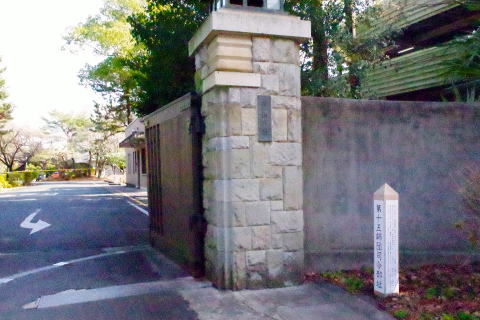
第15師団司令部庁舎(国登録文化財)
洋館風の木造建築で、太平洋戦争後に愛知大学に引き継がれ現在は愛知大学記念館として利用されている。
15th Division Headquarters
Building (National
Registered Cultural Property)
It is a Western-style wooden
building that was taken over by Aichi University after the Pacific War and is
currently used as the Aichi University Memorial Hall.

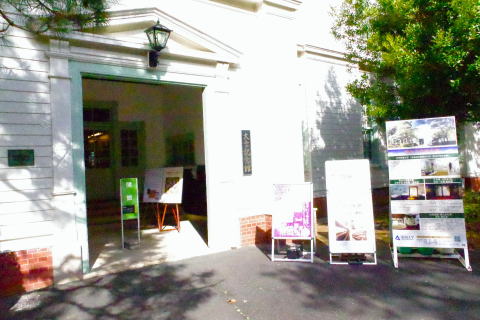
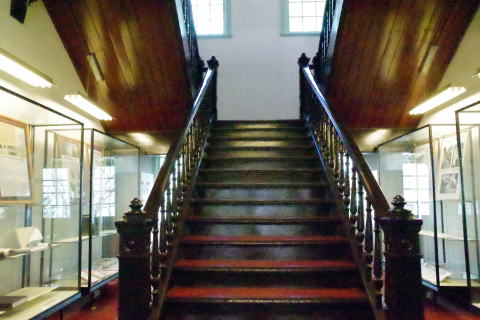
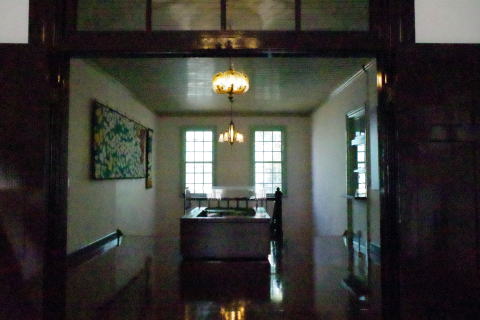
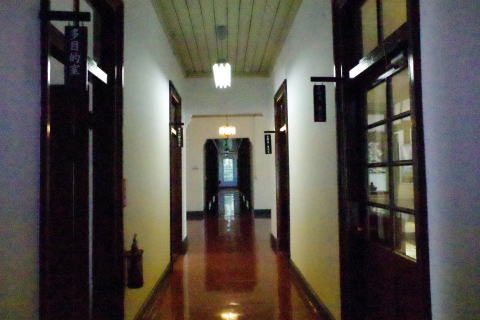
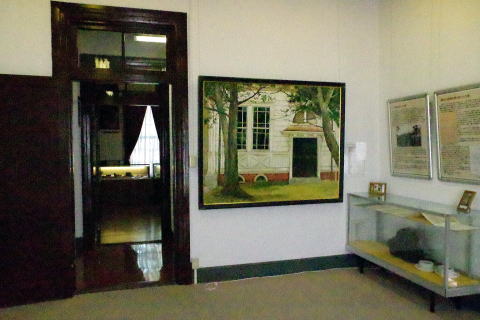
将校集会所
1908年の建築。中廊下のあるモダンな建築で歩兵第60連隊の将校集会所として、将校が食事や会議に使用していた。
Officers meeting place
Architecture
of 1908. It was a modern building with a central hallway and was used by
officers for meals and meetings as the officer assembly hall for the 60th
Infantry Regiment.
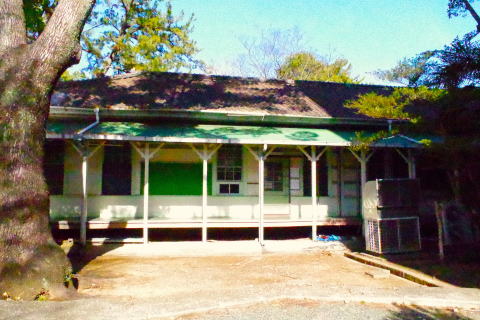
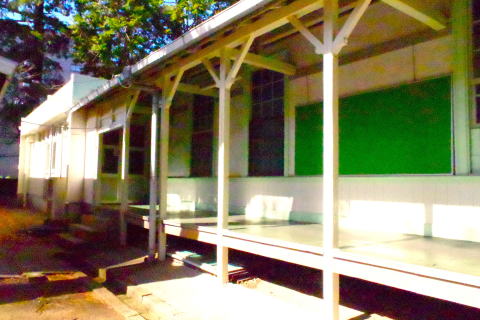

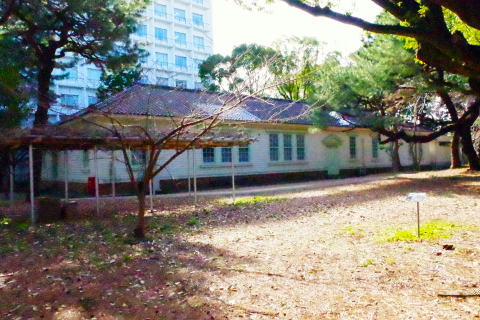
大講堂(現 愛知大学第2体育館)
1927年に教導学校開校時に建築。主体が鉄骨の木造建築で中柱のない大型建物。現在も体育施設として利用されている。左の松は、開校時に昭和天皇陛下行幸記念として植えた松の木。
Large Auditorium (currently Aichi
University 2nd Gymnasium)
Built
in 1927 when the teaching school opened.
It
is a large building that is mainly made of steel and has no pillars. It is
still used as a sports facility. The pine tree on the left was planted to
commemorate the visit of Emperor Showa when the school opened.

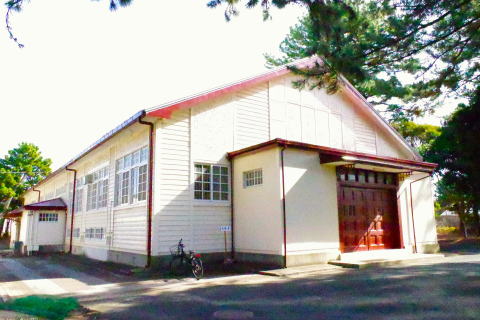
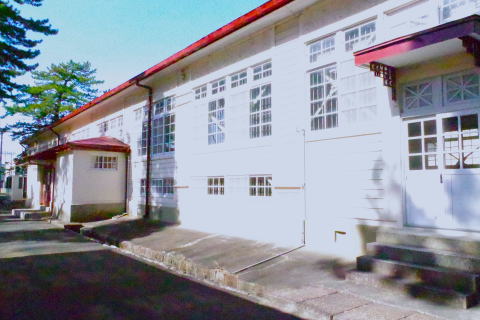
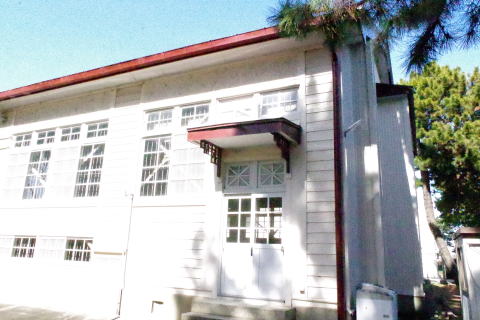
旧陸軍養生舎
1927年に建築。戦病没した陸軍教導学校関係者の遺影や遺品などを保存、陳列した記念館。正門横にあったが移転、改築され現在は教職員組合事務所として利用している。
Former Army War Invalid
Memorial Hall
Built
in 1927. A memorial hall that preserves and displays photographs and belongings
of military personnel who died in the war. It used to be next to the main gate,
but it has been relocated and renovated and is currently used as the teachers'
union office.

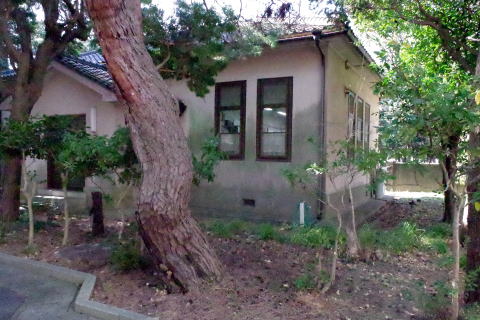
愛知大学周辺戦争遺跡 War ruins around Aichi University
第15師団
師団長官舎(市指定文化財)(石塚町 愛知大学公館)
1912年(明治45年)に建てられた師団長の官舎。明治時代の面影を残す和洋折衷の設計による建物。戦後は愛知大学学長公舎として使用されている。
15th Division Division
Commander's Building (city-designated cultural property) (Ishizuka Town,
Aichi University President's Residence)
The official residence of the division commander built in 1912 (Meiji 45).
A building designed with a blend of Japanese and Western styles that retains
the vestiges of the Meiji era. After the war, it was used as the Aichi
University President's official residence
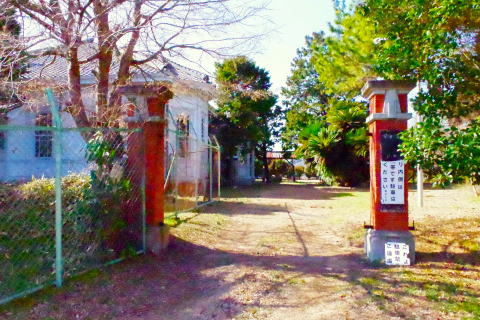
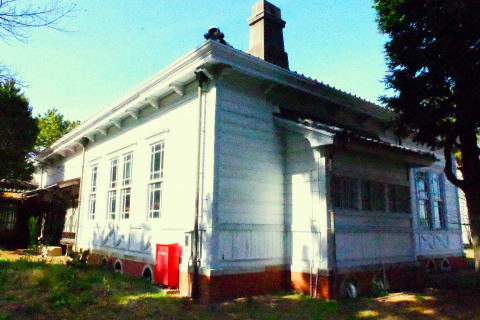
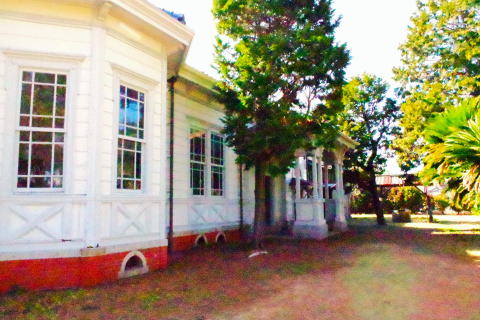

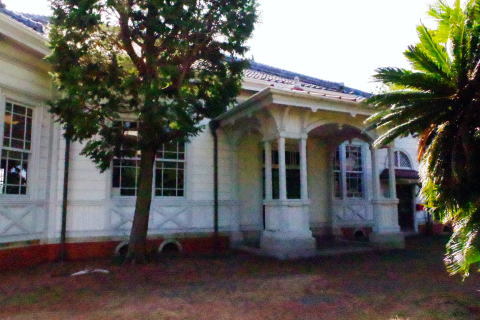
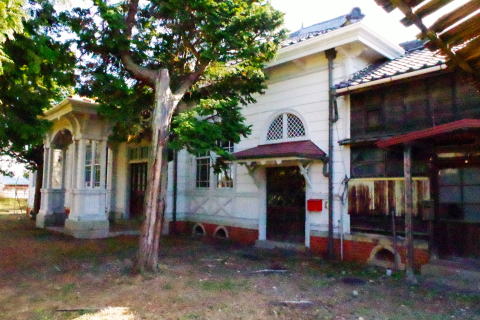

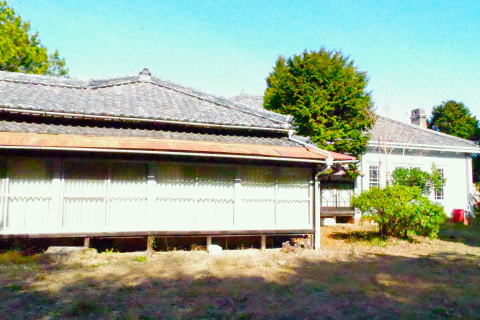


野砲兵第21連隊愛馬記念碑
1940年(昭和15年)に時習館高校内に制作された碑。野砲21連隊は1921年より北満州方面に派遣されるが1925年に廃止された。
21st Field Artillery
Regiment Horse Monument
A monument created inside Jishukan High School in 1940 (Showa 15). The
21st Field Artillery Regiment was dispatched to northern Manchuria from
1921, but was abolished in 1925

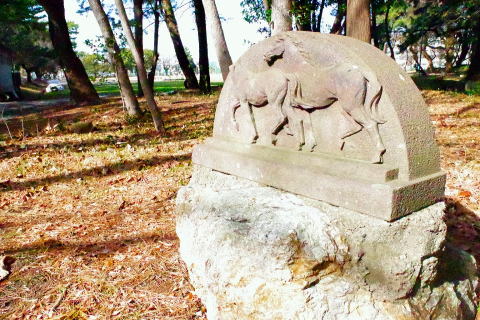
兵器廠門 歩哨舎(町畑町 南部中学校)
1908年に陸軍第15師団の兵器保管場所(第3師団兵器部豊橋出張所)の正門と哨舎として建設。すぐ横の渥美線は旧軍用鉄道として使われていた。兵器廠は現在、栄小学校、南部中学校の校地として転用されている。
Weapons factory gate sentry
house
(Tabata Town/Nanbu Junior High School)
It
was built in 1908 as the main gate and sentry post for the weapons storage area
of the 15th Army Division (3rd Division Ordnance Department Toyohashi Branch
Office). The Atsumi Line right next to it was used as a former military
railway. The weapons factory is currently being used as the school site for
Sakae Elementary School and Nanbu Junior High School.
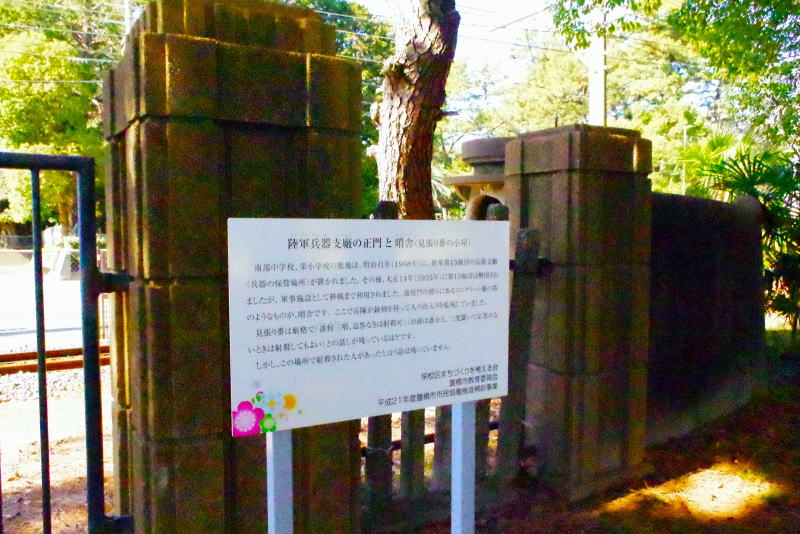
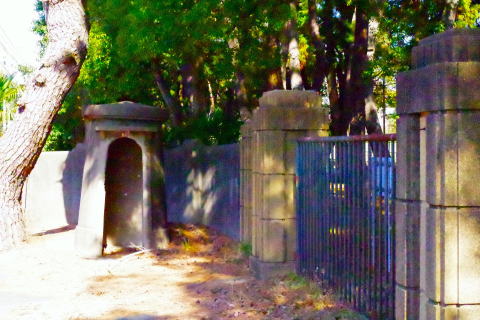


松根油採取跡
太平洋戦争末期、航空機燃料の不足を補うため松の樹液から代用燃料を作ろうとして採取したが、実用化されないうちに終戦になった。緑地公園など近辺の松にも同様の採取跡がみられる。
Pine oil extraction site
At
the end of the Pacific War, pine sap was extracted in an attempt to make a
substitute fuel to compensate for the shortage of aviation fuel, but the war
ended before it could be put to practical use. Similar evidence of harvesting
can be seen in nearby pine trees such as green space Park.


愛知大学 亜細亜友好碑 Aichi University Asia Friendship Monument

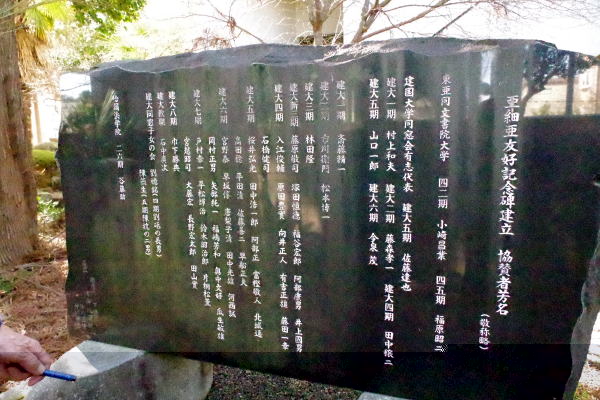
※この記念碑は正門を入って右奥の大学記念会館の裏手に隠れるように置いてあるが、是非場所を移動して来訪者の見える所において欲しいものだ
愛知大学設立趣旨の碑 Monument commemorating the founding purpose of Aichi University


自由受難の鐘 Bell of Liberty and Suffering

<参考資料>
歩兵第十八聯隊(豊橋公園) | 豊橋市美術博物館 (toyohashi-bihaku.jp)
第十五師団(愛知大学周辺) | 豊橋市美術博物館 (toyohashi-bihaku.jp)
陸軍墓地 | 豊橋市美術博物館
(toyohashi-bihaku.jp)
豊橋空襲と豊川海軍工廠の空襲 | 豊橋市美術博物館 (toyohashi-bihaku.jp)
戦争遺跡マップ表修正版 (toyohashi-bihaku.jp)
戦争遺跡マップ裏プリント (toyohashi-bihaku.jp)
豊橋市の戦争遺跡pdf:2631588e29b8fdf0b6016e8d61624272.pdf
(toyohashi-bihaku.jp)
戦跡top